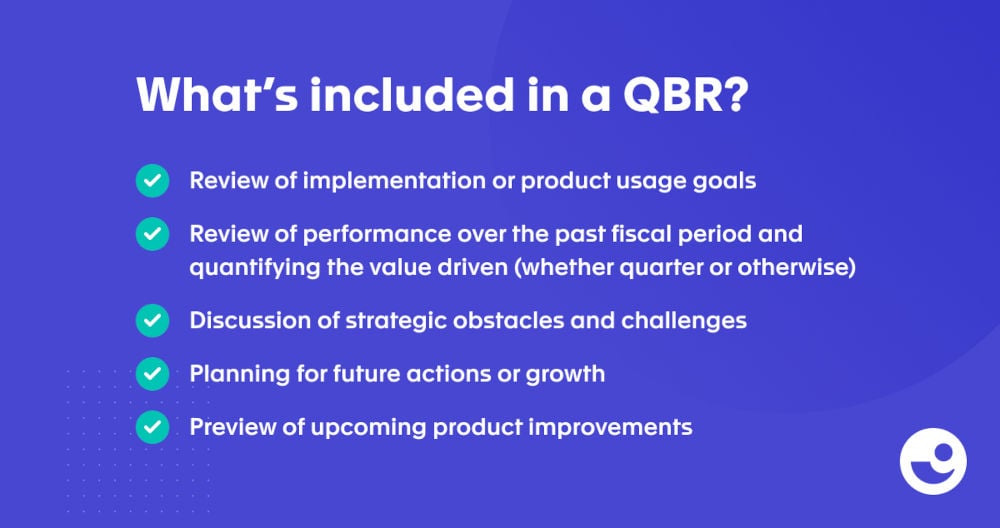"After-sales service is more important than assistance before sales. It is through such service that one gets permanent customers."
This quote, attributed to Konosuke Matsushita, the founder of Panasonic, sums up how crucial it is to nurture your client relationships. No matter how many clients you win during your career, that’s only half the story. Retaining those clients is the essence of business success.
And to retain your clients, regular communication is essential. This article explains how to manage one of the most crucial contributors to client retention: the quarterly business review (QBR).
What Is a QBR?
The quarterly business review is an opportunity to catch up with your customers and discuss the big picture. It’s a crucial element of effective business communication, as are collaboration tools such as these bitrix24 alternative platforms. A rigorous and well-structured QBR lets you talk about the achievements and challenges of the previous three months and gain vital feedback from your clients.
If your business is relatively small, it may be possible to do this with all clients. However, larger organizations may prefer to be more selective in which customers they go through this process with. It’s a good idea to conduct QBRs with your most valued clients, though. QBRs help you to keep a record of your overall business growth and show you a revenue progress chart. They also help you to mention in the business exit strategy or while doing a valuation of a company to sell it.
The benefits of the process are too valuable to pass up. If you have large quantities of data to analyze, you may wish to consider learning Pyspark, as it allows you to process data much faster than other frameworks.
Benefits of conducting QBRs

Conducting QBRs is as vital to your business as conducting cash flow forecasting. Let’s run through some of the main advantages of integrating QBRs as a standard part of your operating procedure.
Highlighting the value you add
A QBR meeting is an excellent chance to show your client data about the ROI you provide for them. If your company provides accounting software for retail business outlets, for example, you could gather a dataset demonstrating the time and money a client is saving using your optimized processes.
Creating stronger relationships
In any relationship, it’s good to check in from time to time. Regular reviews help forge stronger bonds between you and your customer, from the most junior staff to the boardroom.
Focusing the discussion
It’s easy to get caught up in day-to-day activities like creating quotes, reaching for sales targets, and making tight deadlines. Often, this leads to the big-picture questions being pushed aside. Quarterly reviews allow time and space for larger strategic issues to be the emphasis. This means that there’s less danger of client concerns drifting into client discontent as the months go by without you noticing it’s becoming a problem.
Building trust
Trust is priceless in any client relationship. Clients have confidence in you when you take their business and their goals seriously. Holding a QBR is a clear signal that not only do you value their business but that you’re committed to hitting the project management standards required over the following three months. You can track it all with an intuitive project management app.
Preparing for a QBR
The quarterly review is on the horizon; how do you prepare? There are several possible approaches, but they all share a few points in common.
Pull together key evaluations and insights
This is fundamental. Ensure each team involved in the account puts together its ROI data and files its reports well in advance. These documents will form the basis of the deck you share with your client. Many business intelligence solutions can assist with this step. Most importantly, have a unified vision of your value to the client and the hard data to back it up.
Analyze the competition
Doing a competitor analysis can be another terrific way of proving your worth. If you can show that your client has outperformed their competitors as a direct result of using your products or services, great news! And if the data is not so clear? Well, keep it in your back pocket. That’s something to work on for next time.
Focus on goals
Next, consider your client’s stated KPIs for the quarter. Are they looking to focus on social selling to drive engagement and growth? Maybe they’re putting more of an emphasis on improving customer retention? Whatever the goals are, put them front and center when preparing for the QBR. These meetings are ideal for celebrating success and encouraging the client to give you a little more business.
Get the practical aspects right
If the meeting doesn’t flow smoothly, this will undermine its whole purpose. Bring your best team communication tools into play, including your choice of VoIP phone systems, and ensure everyone knows what to expect. Issue a draft agenda well in advance to everyone attending so they’re well prepared. Invite the client to contribute if they notice anything missing they would like to see addressed. That’s another effective way of engaging them in the process.
The meeting itself – Structuring the QBR

Let’s start by giving examples of what not to include during the meeting. Remember: the QBR is essentially a strategy review; it’s not supposed to be a forum for discussing day-to-day operational issues. So that means there should be no mention of workflow challenges, bug fixing, customer support, or other similar areas of concern. Any problems surrounding these elements of the work should be addressed and resolved daily.
Item 1 – Goals
Client goals and KPIs are the starting point. Open with a summary of the current KPIs and show how you’re meeting them. The client will want to see your progress to date, of course. But to put that in context, include comparisons with other periods. Additionally, you’ll want to show some projections to emphasize the coming quarter.
Item 2 – Wins
This is where you enjoy the opportunity to show how great you are. Showcase your achievements and don’t hold back. What were the best successes of the quarter?; Where did you create the most impact for your client?; What effects did this have on the bottom line?
The client will already know about these successes, but it doesn’t hurt to remind them. And since you’ve prepared so well, you’ll have all the data at your fingertips. Aim for a wow factor.
Item 3 – Challenges
Even the best business leadership & management training won’t prevent some days from being worse than others. It’s just a fact of life. Sometimes, despite your best efforts, things don’t work out. The crucial thing is how you respond to setbacks. An honest analysis and debriefing about what didn’t work and why can be one of the most valuable parts of the process.
Item 4 – Looking to the upcoming quarter
Finish with a plan. Setting out the opportunities and potential roadblocks for the next three months focuses everyone’s minds on the future. This is the time to mention what you will be working on and how you intend to achieve it. Doing this also sets you up for the next QBR because you can recap the content of this section during the next meeting.
Top tips for an effective QBR
Done well, regular QBRs can add a large amount of value to your relationship with your client. So here are a few tips to help yours shine.
Focus on the positive
Try to avoid getting stuck in detailed conversations about anything negative. Although you need to address challenges, remember to emphasize positive outcomes and achievements.
It doesn’t have to be face-to-face
Although there’s unique chemistry with face-to-face meetings, it’s not the only option. These days, using a conferencing service or other remote tools can be just as effective. In fact, some clients may prefer this since it saves travel time and is generally less disruptive to the working day.
Avoid getting defensive
If your client brings up difficulties or problems, embrace the criticism. That’s not to say you should dwell on it. Instead, focus on solutions. For example, if your client is concerned that their sales growth hasn’t hit the desired target, you could acknowledge that, point to the current top digital selling trends, and explain how you plan to harness them for your client’s benefit.
Look for appropriate opportunities
If it becomes apparent during the meeting that the client has needs you could help them with, don’t be shy. Although you shouldn’t be in hard-sell mode during a QBR, a gentle upselling is acceptable. If there’s something else you could offer your client, this is a chance to get on board. After all, the great work you’re already doing for them is the best possible recommendation.
Making the relationship work

There’s nothing quite like the excitement of landing a new, valued client. Your team puts lots of time and energy into the initial pitch. So when it pays off, it’s the best feeling in the world.
Next comes the onboarding flurry: setting up the account, signing the contract (using digital signature software free of any glitches, of course; first impressions count), and assigning team members. It’s all good.
But customer retention? That is much harder. Making a client relationship work long-term takes serious commitment, and quarterly business reviews are a vital piece of the puzzle. So if you’re not already making space in your schedule for them, why not give them a try? You might find it’s the best decision you have ever made.




